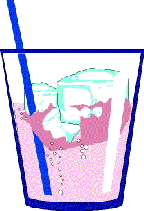Distressing Gut Symptoms May Trace to Sweets
U.S. diners are notorious for having a sweet tooth. It’s hard not to succumb to the pervasive siren calls of sugary confections. Television commercials bombard viewers with enticements for presweetened cereals, breakfast bars, sugar-laden soda pop, and fruit-flavored beverages–many containing, at best, only about 10 percent real juice. Grocery stores seduce consumers with aisle after aisle of temptingly packaged cookies, ice creams, jellies, and jams and then display even more candies and gum at the cash register to boost impulse buys.


The trend of packaging sugary items in larger and larger quantities further fuels U.S. consumption of sweets. For instance, fast-food franchises and movie theatres routinely push consumers to spend a few pennies more to “super-size” that cola or slurpee–from perhaps a 12-ounce serving to a 32- or even 64-ounce jumbo treat.
Bulging waistlines are one sign that too many of us overindulge our sweet tooth. A more immediate side effect of these sweet obsessions may be a bellyache, sometimes accompanied by bloating, cramps, or diarrhea. Researchers at the University of Kansas Medical Center now offer experimental data suggesting one explanation for those gut-level responses.
In Seattle this week at the American College of Gastroenterology annual scientific meeting, the Kansas team reported that in many people, such symptoms can trace to overconsumption of fructose. It’s one of the primary sugars in fruits and vegetables and a sweetener commonly added to manufactured foods. The group’s finding may explain why eating too much fruit at one sitting can trigger a churning stomach–and why gulping down a large non-diet soda may elicit the same effect.
A breath of hydrogen
Because fructose is sweeter and less expensive than sucrose, or table sugar, manufacturers have increasingly been substituting it for sucrose in their recipes. Corn syrup serves as a primary source.
Physicians have long known that although people’s bodies seem to absorb small quantities of fructose easily, they can’t digest large amounts. So, if people eat too much fructose, a large share remains unabsorbed.
As that unabsorbed fructose wends its way through the gut, intestinal bacteria chow down on the sugary fare–and expel hydrogen. Some of their hydrogen exhalations are picked up by the blood, causing the gas to circulate and eventually escape via the breath.
And that’s how the Kansas scientists studied fructose absorption in 15 adults. They fed pure fructose to the volunteers and then analyzed their breath for hydrogen. In one test, each person received 25 grams of fructose–roughly the amount in a 12-ounce can of soda sweetened with high-fructose corn syrup. In a second test, each individual downed twice that amount. Over the next few hours, the researchers monitored the volunteers’ exhalations.
Breath concentrations in excess of 20 parts hydrogen per million connote malabsorption, observes Peter Beyer, the nutritionist who reported these data. And in the first test, hydrogen levels in the breath of seven of the volunteers exceeded 20 ppm. After downing 50 grams of fructose, 11 of the 15 exceeded the threshold value that signals malabsorption, with the group average at 51 ppm.
Many of the malabsorbers at each dose also experienced gastrointestinal discomfort–bloating, diarrhea, and other symptoms of “fructose intolerance”–that peaked between 45 and 300 minutes after ingestion.
Doses mimicked the diet
The biggest surprise here, Beyer says, is that so many of the ostensibly normal, healthy people showed problems resulting from the quantity of fructose found in a single can of cola.
Average fructose consumption in this country is about 37 grams per day, his team reports, although some people easily exceed 60 grams. Soft drinks are one of the primary contributors, Beyer points out. In fact, they provide about one-third of the added sugar in the U.S. diet–this is sugar that is not an integral part of a meal’s plant ingredients, such as a pear, carrot, or tomato. Although a single 12-ounce serving of many soft drinks contains 20 to 30 grams of fructose, a 16-ounce bottle sometimes packs in 50 grams of fructose.
Even pure fruit juice contains a potent jolt of fructose, Beyer notes. That’s why Grandma traditionally served juice in those tiny 4-ounce glasses, he says. Today, convenience markets and gas stations host refrigerator cases offering 16-ounce bottles of real juice or corn-syrup-sweetened fruit beverages such as lemonade or juice cocktails. These, Beyer notes, can easily carry 25 to 50 grams of fructose.
Data compiled by the U.S. Department of Agriculture show that consumers average 13 teaspoons of high-fructose corn syrup in the 32 teaspoons of sugary sweeteners that they take in each day.
Commercial use of this sugar for baking and sweetening beverages has escalated in recent decades. Daily per capita consumption in 1996 was 2.5 times the daily average in 1978, USDA data indicate.
Annual U.S. consumption of high-fructose corn syrup amounts to 59 pounds per person, according to the Center for Science in the Public Interest (CSPI), a nutrition-advocacy group based in Washington, D.C.
Indeed, the nation’s escalating consumption of fructose and other sugars has prompted CSPI to campaign for including information about added-sugar content in the mandatory labeling of foods.







